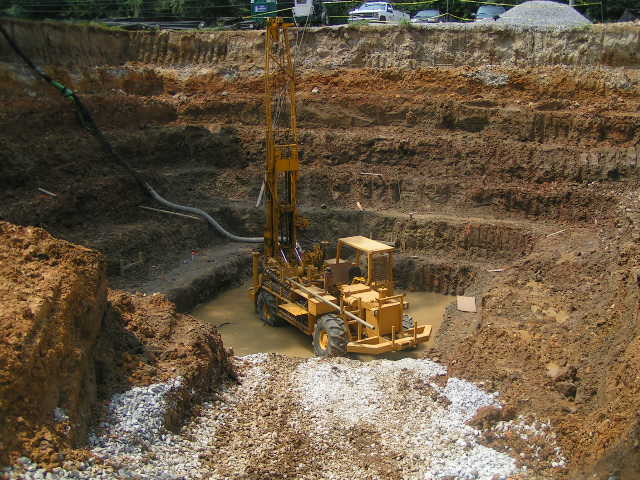Leading Consulting Civil Engineering Companies for Facilities Projects
Leading Consulting Civil Engineering Companies for Facilities Projects
Blog Article
Exactly How Consulting Engineers Enhance Geotechnical Engineering Projects: Insights Into Their Experience, Techniques, and Collaborative Approaches
Consulting designers are pivotal in improving geotechnical engineering jobs, using their specialized understanding to navigate the intricacies of subsurface conditions. Their joint methods foster interaction among varied project stakeholders, eventually forming the project's trajectory.
Role of Consulting Engineers
The knowledge of getting in touch with designers in geotechnical design is basic to the effective execution of building tasks. These experts play a crucial duty in assessing soil and rock residential properties, which are critical aspects influencing design and construction choices. By carrying out extensive website investigations, speaking with engineers gather important information that notifies the layout procedure, ensuring tasks are built on stable and ideal ground.
Consulting engineers likewise offer vital understandings into threat management (geotechnical geologist). They recognize possible geotechnical hazards, such as landslides, dirt liquefaction, and negotiation problems, allowing stakeholders to apply effective reduction approaches. Their proficiency aids in maximizing structure layouts, which can lead to considerable price financial savings and enhanced safety and security
Moreover, speaking with engineers act as a crucial link in between task owners, designers, and service providers. Their ability to equate complicated geotechnical data into workable referrals fosters cooperation and facilitates informed decision-making throughout the task lifecycle. This multidisciplinary strategy not just boosts project performance yet also ensures compliance with regulative standards and ideal practices.
Trick Techniques in Geotechnical Engineering

One primary technique is website investigation, which includes conducting area tests and lab analyses to collect data on subsurface conditions. Techniques such as Standard Infiltration Screening (SPT) and Cone Penetration Testing (CPT) are widely made use of to review soil stratigraphy and stamina. Furthermore, geophysical techniques, including seismic and electrical resistivity surveys, give non-invasive ways to evaluate subsurface qualities.
Another vital technique is numerical modeling, which makes it possible for engineers to replicate numerous scenarios and predict exactly how soil-structure interactions will behave under various loading problems. Finite Element Evaluation (FEA) is a typical strategy utilized in this context.
Additionally, the design of foundations, keeping frameworks, and earthworks relies heavily on these methodologies - geotechnical geologist. By integrating innovative logical devices with field data, getting in touch with engineers can establish tailored services that address details job obstacles, ultimately adding to the stability and security of building and construction tasks
Significance of Soil Evaluation
Soil analysis acts as a foundational element in geotechnical design, supplying essential understandings right into the physical and chemical buildings of dirt necessary for effective construction planning. Understanding dirt qualities is vital for identifying its load-bearing ability, drain actions, and capacity for settlement or instability. Comprehensive soil examinations, including tasting and laboratory testing, help recognize parameters such as soil kind, dampness content, thickness, and shear toughness.
These evaluations notify the selection of appropriate building strategies and products, eventually affecting task safety and durability. For example, natural dirts may need various structure layouts contrasted to granular dirts, necessitating customized design solutions. Moreover, soil analysis aids in identifying impurities that can pose threats to human health or the atmosphere, enabling the growth of reduction techniques.
Integrating soil analysis into the beginning of task advancement assists to minimize unpredicted obstacles, ensuring that engineers can prepare for and attend to possible problems prior to they escalate. By developing a thorough understanding of the website problems, seeking advice from engineers can enhance layout efficiency and minimize prices, thus boosting the general success of geotechnical engineering projects.
Joint Techniques in Jobs
Effective geotechnical jobs usually rest on collaborative techniques that unite varied know-how from various disciplines. Reliable collaboration amongst seeking advice from engineers, geologists, visite site environmental scientists, and building experts is crucial for attending to complex difficulties and optimizing job results. By leveraging the one-of-a-kind abilities and knowledge of each team participant, projects can profit from an all natural understanding of the website conditions, governing needs, and design restraints.
Regular communication and interdisciplinary meetings facilitate the sharing of understandings and cultivate a culture of synergy. These joint initiatives allow the recognition of prospective threats early in the job lifecycle, enabling for prompt reduction approaches. Including feedback from stakeholders, consisting of neighborhood communities and governing companies, makes sure that all point of views are considered, boosting task acceptance and compliance.
Furthermore, the assimilation of sophisticated technologies, such as Geographic Information Systems (GIS) and Building Information Modeling (BIM), further improves collaboration. These devices permit the real-time sharing of information and visualization of geotechnical problems, advertising notified decision-making. Ultimately, a collaborative strategy not only enhances project implementation however likewise lays the structure for cutting-edge solutions to intricate geotechnical design challenges.
Influence On Project End Results

Consulting engineers employ advanced techniques such as danger assessment and predictive modeling, which improve the accuracy of job forecasts. Their ability to integrate ingenious modern technologies, like geotechnical instrumentation and data analytics, even more refines the design and building and construction procedures. Therefore, jobs experience improved efficiency, reduced prices, and minimized hold-ups.
Moreover, cultivating efficient communication and collaboration among employee boosts problem-solving capacities. When challenges emerge, a joined front enables quick recognition of services, protecting against potential problems. Ultimately, the collaborative efforts of hop over to here consulting designers contribute to greater quality outcomes, making sure that projects satisfy both governing requirements and client expectations.
Verdict

Report this page